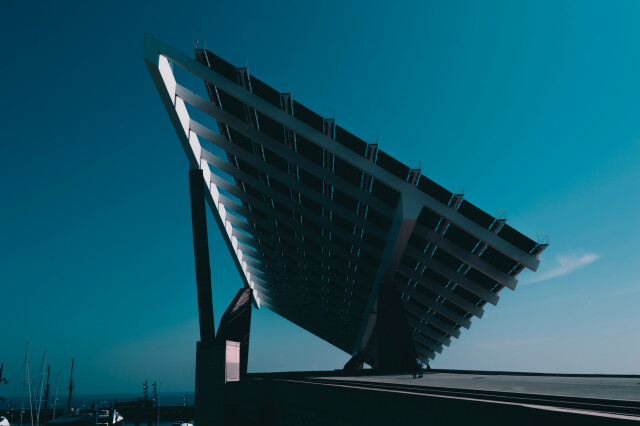The Importance of Urban Solar Infrastructure in European Cities

Urban solar infrastructure, including solar carports, can contribute significantly to the transition towards a more sustainable and low-carbon future. The widespread adoption of renewable energy sources such as solar power can help reduce urban areas’ carbon footprint and mitigate the negative environmental impacts of traditional energy sources.
Improving air quality in urban areas
Traditional energy sources, such as coal and oil-based power plants, produce pollutants that can harm human health and the environment. By transitioning to solar power, cities can reduce their reliance on these harmful energy sources and improve air quality for their residents. Furthermore, solar carports and other solar infrastructure can also help improve air quality in urban areas.
A European Environment Agency (EEA) study has also highlighted the detrimental impact of air pollution on public health in Europe. According to the study, air pollution is responsible for over 238,000 premature deaths yearly in Europe, with urban areas being the most affected.
The EEA study also found that using renewable energy sources, including solar power, can significantly reduce air pollution and improve public health. The report highlighted that increasing the share of renewable energy in the energy mix can reduce air pollutant emissions by up to 80% by 2050.
This, and many other studies, further emphasise the importance of transitioning to renewable energy sources like solar power, particularly in urban areas. By doing so, European cities can significantly improve air quality and public health while contributing to the global fight against climate change.

Enhancing urban resilience through solar infrastructure
Solar infrastructure can help reduce the overall energy demand of a city, which can lessen the strain on the electrical grid during peak usage times. This can lead to a more reliable and stable power supply for residents and businesses, reducing the risk of blackouts and other disruptions.
Studies have shown that solar architecture, such as solar carports, can create more jobs per unit of electricity generated than any other energy source. This is particularly important in urban areas where unemployment rates may be higher, and job creation is a top priority for local governments. Installing solar carports and other solar infrastructure can stimulate economic growth and help create a more resilient city.
Solar architecture can also contribute to the resilience of cities in the face of climate change. With the increasing frequency and severity of extreme weather events, such as heatwaves, droughts, and flooding, cities must be prepared to face these challenges. Solar infrastructure can help ensure critical facilities, such as hospitals and emergency services, remain operational during power outages.

European cities leading the way
Several cities in Europe have already taken steps to incorporate solar infrastructure into their city planning. For example, Amsterdam has installed a solar energy eco-system at its Johan Cruijff Arena, providing clean energy for events and beyond. The city of Barcelona has also implemented a solar energy plan, which includes the installation of solar panels on public buildings and creation of solar-powered public transportation.
Despite these successes, there are still barriers to the widespread adoption of urban solar infrastructure. These include the upfront installation costs, the need for specialised equipment and expertise, and regulatory obstacles. However, as the benefits of solar architecture become more widely recognised, more cities will likely invest in this technology.

In conclusion, the importance of urban solar architecture in European cities cannot be overstated. As technology advances and becomes more accessible, we will likely see more cities embrace solar infrastructure as a critical component of city planning. By reducing carbon emissions, creating jobs, improving air quality, and enhancing the resilience of cities in the face of climate change, urban solar infrastructure can contribute to a more sustainable and prosperous future for urban areas.









